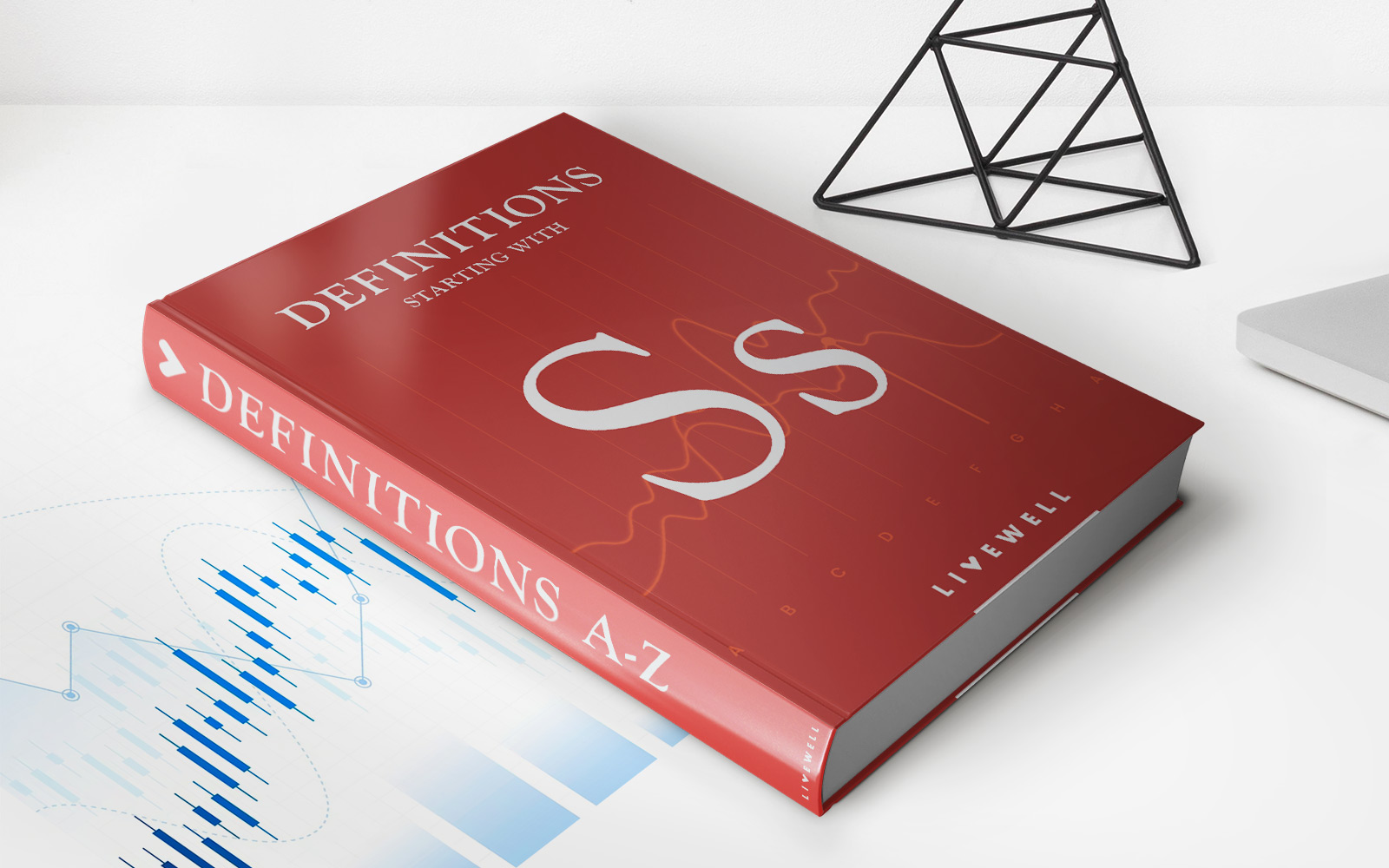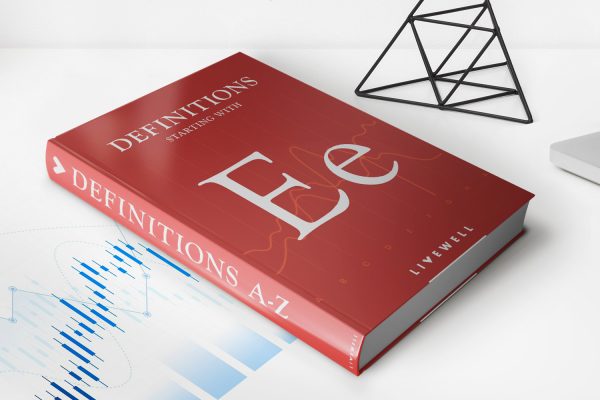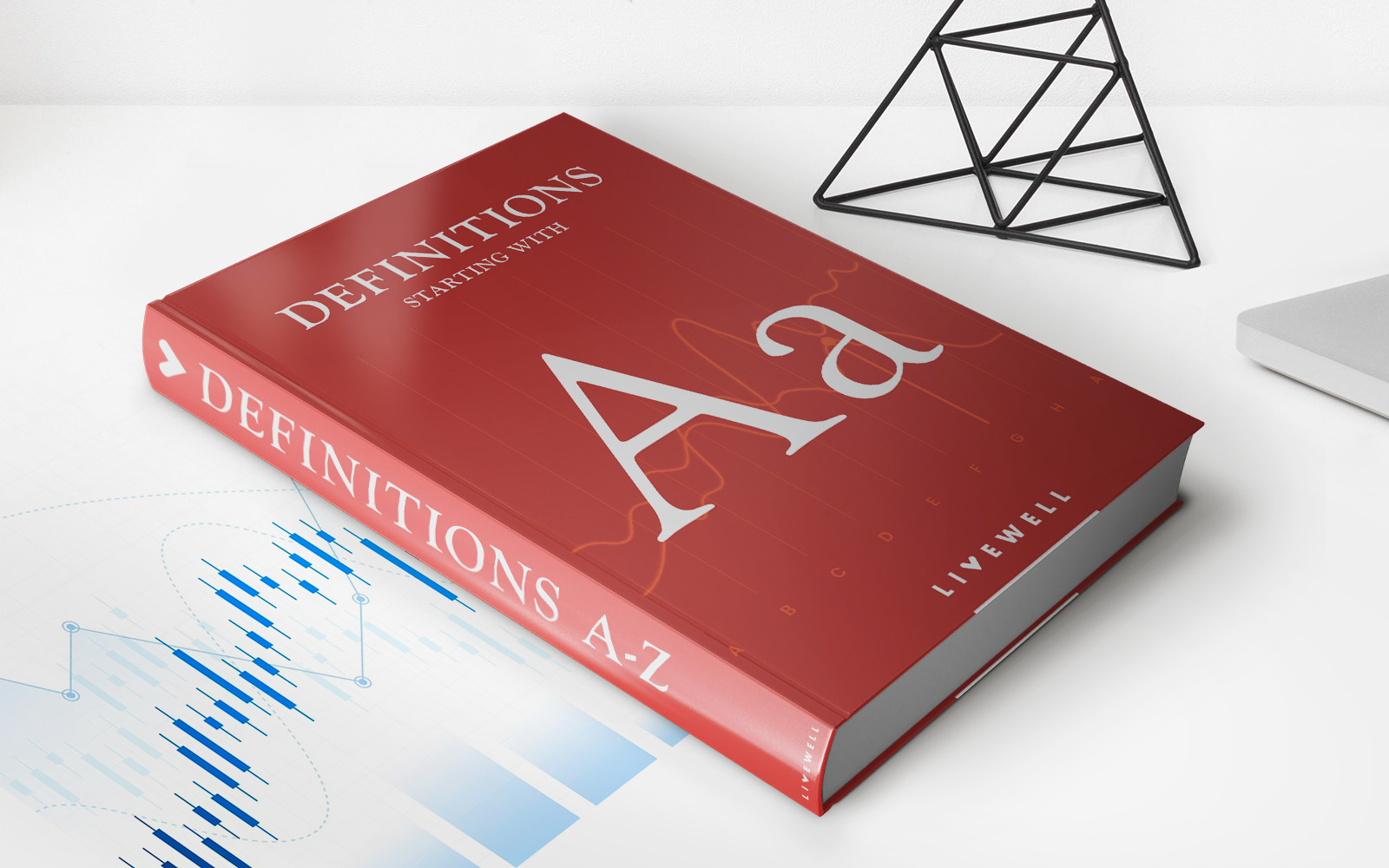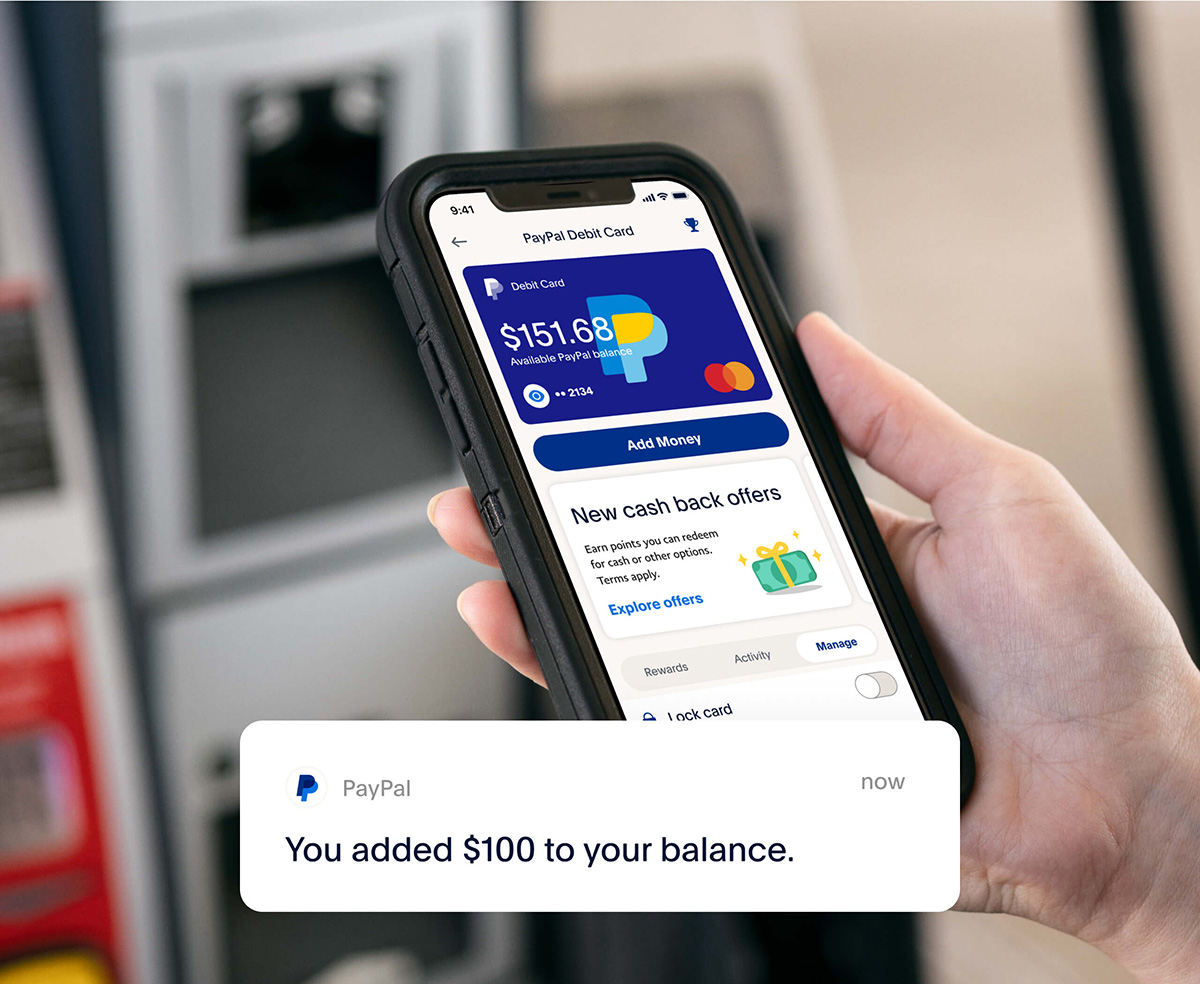

Finance
How Does Private Student Loans Work
Published: January 20, 2024
Discover how private student loans work and take control of your finances. Learn how to manage your finances with private student loans and achieve your educational goals.
(Many of the links in this article redirect to a specific reviewed product. Your purchase of these products through affiliate links helps to generate commission for LiveWell, at no extra cost. Learn more)
Table of Contents
- Introduction
- Understanding Private Student Loans
- The Application Process
- Loan Amounts and Interest Rates
- Repayment Options and Terms
- Cosigner Requirements
- The Impact on Credit Score
- Benefits and Drawbacks of Private Student Loans
- Comparing Private and Federal Student Loans
- Important Considerations before Taking a Private Student Loan
- Conclusion
Introduction
As the cost of higher education continues to rise, many students and their families turn to student loans to help fund their education expenses. While federal student loans are the most commonly known option, private student loans also play a significant role.
Private student loans are loans offered by financial institutions, such as banks or credit unions, and are designed to help cover educational costs that may not be fully met by federal loans, scholarships, or personal savings. These loans can provide flexibility and additional funding options for students pursuing their educational journey.
In this article, we will dive into the world of private student loans and explore how they work, the application process, loan amounts and interest rates, repayment options, cosigner requirements, impact on credit score, and the benefits and drawbacks of choosing private student loans over federal loans. Additionally, we will discuss important considerations that anyone considering a private student loan should keep in mind.
It is crucial to remember that private student loans should be approached with careful consideration and a complete understanding of the terms and conditions. By familiarizing ourselves with the ins and outs of private student loans, we can make informed decisions that align with our financial goals and educational aspirations.
Understanding Private Student Loans
Private student loans are loans offered by private financial institutions, such as banks, credit unions, and online lenders, to help cover the cost of education. Unlike federal student loans, which are funded by the federal government, private student loans are funded by private lenders.
One key feature of private student loans is their flexibility. Unlike federal loans that have fixed interest rates and terms, private loans offer variable interest rates, giving borrowers the opportunity to secure lower rates when market conditions are favorable.
Additionally, private student loans can be used to cover a wide range of educational expenses, including tuition, textbooks, housing, and even personal expenses. This flexibility can be particularly beneficial for students attending expensive institutions or pursuing specialized programs that require additional funding.
Another important aspect of private student loans is that they typically require a credit check. Lenders evaluate creditworthiness by looking at factors such as credit scores, income, and debt-to-income ratios. This can make it challenging for students with limited credit history or low income to qualify for a loan on their own. In such cases, having a creditworthy cosigner, such as a parent or guardian, can greatly improve the chances of loan approval.
Private student loans also generally offer the option for both fixed and variable interest rates. Fixed interest rates remain the same throughout the life of the loan, providing borrowers with predictable monthly payments. Variable interest rates, on the other hand, fluctuate with market conditions and may start lower than fixed rates but can increase over time.
Unlike federal loans, private student loans typically require payments while the borrower is still in school. This can be a disadvantage for students who may not have the financial means to make payments during their studies. However, some lenders do offer options for deferred repayment or interest-only payments while the borrower is enrolled.
It is important to carefully consider all factors before opting for a private student loan. Understanding the terms, interest rates, repayment options, and potential risks will help borrowers make informed decisions and choose the loan that best suits their individual circumstances.
The Application Process
Applying for a private student loan entails a series of steps, similar to other loan applications. While the specific process may vary slightly between lenders, the following are the general steps involved:
- Research and Compare: Start by researching and comparing different private student loan lenders. Consider factors such as interest rates, repayment terms, fees, and borrower benefits. Look for lenders with a reputation for excellent customer service and flexible repayment options.
- Gather Necessary Documents: Before starting the application, gather all the necessary documents. This typically includes proof of enrollment or acceptance into a qualifying educational institution, identification documents, income verification, and sometimes proof of residency.
- Fill out the Application: Complete the lender’s application form, which can usually be done online. Provide accurate and detailed information about yourself, your educational institution, the loan amount requested, and any other required details.
- Submit Supporting Documents: Depending on the lender’s requirements, additional supporting documents may be needed. This could include financial aid award letters, transcripts, or a letter of acceptance from the educational institution.
- Consider a Cosigner: As mentioned earlier, having a creditworthy cosigner can significantly increase the likelihood of loan approval and help secure more favorable interest rates. If you are considering a cosigner, they will need to provide their information and consent.
- Review and Sign: Once the application is complete, carefully review all terms and conditions, including the interest rate, repayment schedule, loan duration, and any applicable fees. If everything looks good, electronically sign the loan agreement.
- Wait for Approval: The lender will review your application and supporting documents. The approval process can take anywhere from a few days to a couple of weeks, depending on the lender’s processing time. During this waiting period, avoid applying for other loans to prevent multiple hard inquiries on your credit report.
- Loan Disbursement: If your loan is approved, the lender will send a final disclosure outlining the loan details. After reviewing and accepting the disclosure, the funds will be disbursed directly to your educational institution to cover your approved expenses.
It’s important to stay organized throughout the application process and be prompt in providing any additional information or documentation requested by the lender. Being proactive and prepared can help streamline the process and increase your chances of obtaining the desired private student loan.
Loan Amounts and Interest Rates
The loan amounts and interest rates offered by private student loan lenders can vary depending on factors such as the borrower’s creditworthiness, income, and the educational institution they are attending. Here are some key points to consider regarding loan amounts and interest rates for private student loans:
Loan Amounts: Private student loans can typically cover the full cost of attendance, including tuition, fees, books, housing, and other educational expenses. The specific loan amount you can borrow will depend on the lender’s policies and the cost of your education. It’s important to carefully consider your education costs and borrow only what you need to avoid taking on unnecessary debt.
Interest Rates: Private student loans typically offer both fixed and variable interest rate options. Fixed interest rates remain unchanged throughout the repayment period, providing borrowers with stable monthly payments. Variable interest rates, on the other hand, can fluctuate based on market conditions and may start lower than fixed rates. While variable rates may offer potential savings initially, they can increase over time, resulting in higher overall repayment costs.
Private student loan interest rates are influenced by factors such as the borrower’s credit history, income, and the lender’s pricing model. Generally, borrowers with excellent credit and stable income are more likely to secure lower interest rates. It’s crucial to shop around and compare rates from different lenders to ensure you are getting the most competitive offer.
Additionally, some lenders offer interest rate discounts or incentives for borrowers who meet specific criteria. For example, setting up automatic payments or maintaining a good repayment history may make you eligible for a reduced interest rate. Take advantage of any discounts or incentives offered by the lenders to minimize your overall loan costs.
When considering loan amounts and interest rates, it’s essential to strike a balance between borrowing enough to cover your educational expenses and managing your future repayment obligations. Calculate your expected monthly payments and consider how they will fit into your budget after graduation.
Remember, private student loans come with a cost, and the interest accrued over the repayment period can significantly impact the overall amount repaid. Be mindful of your future financial well-being and borrow responsibly, keeping in mind the potential risks and obligations associated with private student loans.
Repayment Options and Terms
When it comes to repaying private student loans, borrowers have various options and terms to consider. Understanding these options is crucial to develop a repayment plan that aligns with your financial situation and goals.
Repayment Terms: Private student loans typically offer repayment terms ranging from 5 to 20 years. The specific term depends on the lender and the loan amount. Generally, longer repayment terms result in lower monthly payments but may lead to higher overall interest costs. Shorter repayment terms, on the other hand, require larger monthly payments but result in less interest paid over the life of the loan. Consider your financial capabilities and future plans when choosing a repayment term.
Standard Repayment: The most common repayment option for private student loans is the standard repayment plan. With this option, borrowers make fixed monthly payments over the term of the loan until it is fully repaid. The monthly amount is calculated based on the loan amount, interest rate, and repayment term. This option ensures that the loan will be paid off within the agreed-upon timeframe.
Graduated Repayment: Some lenders offer graduated repayment plans, where the monthly payments start lower and gradually increase over time. This option can be beneficial for borrowers who expect their income to increase in the future. However, keep in mind that lower initial payments may result in higher overall interest costs.
Income-Driven Repayment: While income-driven repayment plans are more commonly associated with federal student loans, some private lenders also offer similar options. These plans base monthly payments on a percentage of the borrower’s income, making them more manageable for individuals with lower income or facing financial difficulties. If available, this option can provide flexibility and affordability, especially during periods of financial uncertainty.
It’s important to note that not all private lenders offer the same range of repayment options. Before signing a loan agreement, carefully review the repayment terms offered by the lender to ensure they fit your financial situation and goals.
Additionally, some lenders may provide borrower benefits, such as interest rate reductions for enrolling in automatic payments or interest-only payments while the borrower is in school. Take advantage of these benefits to save money and ease the repayment process.
Lastly, consider the potential for early repayment. Determine whether there are any penalties for making additional payments or paying off your loan early. Flexibility in making extra payments can help reduce the overall interest paid and shorten the repayment timeline.
Remember, it’s crucial to stay on top of your student loan repayment obligations and make payments on time. Set reminders, automate payments if possible, and reach out to your lender if you encounter any difficulties to explore available options or alternative repayment plans.
Cosigner Requirements
When considering a private student loan, it’s essential to understand the cosigner requirements and the role they play in the loan application process. A cosigner is someone who guarantees the loan repayment if the primary borrower is unable to fulfill their obligations. Here are some key points to consider:
Why Cosigners Are Required: Private student loan lenders often require a cosigner to mitigate the risk associated with lending to students who may have limited credit history or income. Having a cosigner provides an extra layer of assurance for lenders, as they can rely on the cosigner’s established credit history and financial stability.
Who Can Be a Cosigner: Generally, a cosigner is a financially responsible individual with a good credit history. This is often a parent, guardian, or another close family member. Lenders typically require cosigners to be U.S. citizens or permanent residents residing in the same country as the borrower.
Cosigner Responsibilities: Cosigners are equally responsible for the repayment of the loan. If the primary borrower fails to make payments, the cosigner becomes legally obligated to fulfill the loan obligations. This includes making payments in the event of default or delinquency. It’s important for cosigners to carefully consider their financial capabilities and willingness to take on this responsibility before agreeing to cosign a loan.
Impact on Cosigner’s Credit: The loan appears on both the primary borrower’s and the cosigner’s credit reports. Any late payments, missed payments, or defaults can negatively impact both parties’ credit scores. It’s crucial for both the primary borrower and the cosigner to communicate effectively and make timely payments to protect their credit ratings.
Options for Cosigner Release: Some private student loan lenders offer an option for cosigner release. This typically requires the primary borrower to meet specific credit and income criteria, demonstrating their ability to manage the loan independently. If eligible, the borrower can request the removal of the cosigner from the loan agreement. However, not all lenders offer this option, so it’s important to check with your lender to see if it’s available.
Cosigning a loan is a significant commitment, and both the primary borrower and the cosigner should carefully consider the potential risks and responsibilities involved. Open and honest communication between both parties is essential to ensure a smooth repayment process and to protect the cosigner’s financial well-being.
If possible, it’s advisable to have a plan in place to release the cosigner as soon as the primary borrower meets the eligibility criteria. This allows the primary borrower to establish their credit history and take full responsibility for the loan.
The Impact on Credit Score
Private student loans, like any other type of loan, can have a significant impact on your credit score. Understanding this impact is essential for borrowers to manage their loans responsibly and protect their creditworthiness. Here’s how private student loans can affect your credit score:
Building Credit History: Private student loans provide an opportunity for borrowers, especially those with limited or no credit history, to start building credit. Making timely payments and demonstrating responsible loan management can positively impact your credit score over time.
Payment History: Your payment history is the most crucial factor influencing your credit score. Making on-time payments every month will have a positive impact on your credit score. Conversely, late payments or missed payments can significantly damage your credit score. It’s crucial to prioritize loan payments and ensure they are made by or before the due dates.
Credit Utilization Ratio: The amount of debt you carry compared to your credit limits, known as the credit utilization ratio, is another important factor in your credit score. Private student loans can increase your overall debt, which can impact this ratio. Keeping your credit utilization ratio low by managing other debts responsibly can help maintain a healthy credit score.
Credit Inquiries: Applying for a private student loan requires a credit check, which results in a hard inquiry on your credit report. While one or two inquiries may have a minimal impact, multiple inquiries within a short period can temporarily lower your credit score. It’s important to be mindful of the number of credit applications you submit and only apply for loans you genuinely need.
Long-Term Debt: Private student loans typically have a lengthy repayment period, spanning several years. Long-term debt can influence your credit score, as it demonstrates your ability to manage long-term financial obligations. Consistently making on-time payments and maintaining a positive repayment history can strengthen your creditworthiness.
It’s important to note that the impact on your credit score will depend on your overall credit history and how you manage your private student loan. Responsible borrowing and diligent repayment practices are essential for maintaining a healthy credit score.
If you experience financial difficulties and are unable to make timely payments, it is crucial to communicate with your lender. They may offer options such as loan deferment, forbearance, or alternative repayment plans to help you avoid default and minimize the negative impact on your credit score.
Monitoring your credit regularly through free annual credit reports or credit monitoring services can keep you informed about any changes to your credit score. This allows you to identify and address any discrepancies or issues promptly.
Remember, building and maintaining a good credit score is an ongoing process. Responsible management of your private student loans can contribute positively to your creditworthiness and future financial opportunities.
Benefits and Drawbacks of Private Student Loans
Private student loans offer a range of benefits and drawbacks that borrowers should consider before deciding to pursue this form of financing for their education. Here are some key advantages and disadvantages to keep in mind:
Benefits:
- Flexibility: Private student loans provide flexibility in terms of the loan amount and how the funds can be used. This can be particularly beneficial for students attending expensive institutions or pursuing specialized programs that require additional funding beyond what federal loans offer.
- Competitive Interest Rates: Private lenders often offer competitive interest rates, especially to borrowers with strong credit histories and income. Securing a lower interest rate can lead to significant savings over the life of the loan.
- Quick Application Process: Private student loans generally have a faster application process compared to federal loans. This streamlined process allows borrowers to access the funds they need in a shorter amount of time.
- Cosigner Option: Private student loans allow borrowers to include a creditworthy cosigner, which can increase the chances of loan approval and potentially lead to lower interest rates. Having a cosigner can be particularly beneficial for students with limited credit history or income.
- Additional Funding Option: Private student loans can serve as an additional funding option when other financial aid sources, such as scholarships, grants, or federal loans, fall short. This can help bridge the gap in college costs and allow students to pursue their educational goals.
Drawbacks:
- Higher Interest Rates: While private student loan interest rates can be competitive, they are generally higher than federal loan rates. Depending on the borrower’s creditworthiness, income, and the prevailing market conditions, the interest rates can vary and potentially result in higher overall repayment costs.
- Credit Check and Cosigner Requirements: Private student loans often require a credit check, and they may have strict credit score and income requirements. Students with limited credit history or low income may find it challenging to qualify for a private loan without a creditworthy cosigner.
- Repayment Obligations: Unlike federal student loans that offer various repayment plans and borrower protections, private student loans typically have less flexible repayment options. They may require repayment while the borrower is still in school, and borrowers may not have access to income-driven or loan forgiveness programs.
- Potential for Variable Rates: Private student loans often offer variable interest rates, which means the rates can fluctuate over time. While variable rates may initially be lower, they can increase and become less predictable, potentially leading to higher monthly payments and overall loan costs.
- No Federal Benefits: Private student loans do not offer the same borrower benefits and protections as federal student loans. This means borrowers may miss out on options such as income-driven repayment plans, loan forgiveness programs, or deferment and forbearance options in times of financial hardship.
Before taking out a private student loan, carefully weigh the benefits and drawbacks. Consider your financial situation, repayment capabilities, and long-term goals. It’s advisable to exhaust all federal student loan options and explore scholarship opportunities before turning to private loans. Additionally, compare rates and terms from multiple lenders to ensure you secure the best possible loan terms.
Ultimately, choosing the right financing option for your education requires thorough research, careful consideration, and a clear understanding of the associated benefits and drawbacks.
Comparing Private and Federal Student Loans
When it comes to financing higher education, students have the option to choose between private student loans and federal student loans. Understanding the differences between the two can help borrowers make informed decisions based on their individual circumstances. Here’s a comparison of private and federal student loans:
Loan Source:
- Private Student Loans: Private student loans are offered by private financial institutions such as banks, credit unions, and online lenders. They are not funded or backed by the government.
- Federal Student Loans: Federal student loans are funded by the U.S. Department of Education. These loans are obtained by filling out the Free Application for Federal Student Aid (FAFSA).
Interest Rates:
- Private Student Loans: Private student loans offer both fixed and variable interest rates. The specific rate is determined by factors such as the borrower’s creditworthiness, income, and prevailing market conditions.
- Federal Student Loans: Federal student loans typically have fixed interest rates set by the government. These rates are generally lower than private loan rates and remain the same throughout the life of the loan.
Repayment Options:
- Private Student Loans: Private student loans may have more limited repayment options compared to federal loans. They often require repayment while the borrower is still in school, and borrowers may not have access to income-driven repayment plans or loan forgiveness programs.
- Federal Student Loans: Federal student loans offer various repayment options, including income-driven repayment plans that adjust monthly payments based on the borrower’s income. They also provide potential loan forgiveness programs, deferment, and forbearance options in times of financial hardship.
Credit Check and Cosigner Requirements:
- Private Student Loans: Private student loans generally require a credit check, and borrowers with limited credit history or low income may need a creditworthy cosigner to qualify for a loan or secure a lower interest rate.
- Federal Student Loans: Federal student loans do not require a credit check or cosigner. They are available to eligible students based on financial need and other factors determined by the FAFSA.
Borrower Benefits and Protections:
- Private Student Loans: Private student loans often have fewer borrower benefits and protections compared to federal loans. They may not offer options such as income-driven repayment plans or loan forgiveness programs.
- Federal Student Loans: Federal student loans come with a range of borrower benefits and protections. These include the potential for income-driven repayment plans, loan forgiveness, deferment, forbearance, and the opportunity to consolidate loans.
When deciding between private and federal student loans, borrowers should consider their financial situation, future plans, and the specific terms and benefits offered by each option. In general, it is advisable to explore federal student loans first, as they often provide more favorable terms and borrower protections. However, private student loans can be a viable option for students who have exhausted their federal loan options or have unique circumstances that make private loans a better fit.
It’s crucial to carefully compare rates, terms, and repayment options from multiple lenders for private student loans to ensure you secure the most suitable loan for your needs. Additionally, discussing loan options with a financial aid advisor can provide valuable guidance in making an informed decision.
Important Considerations before Taking a Private Student Loan
Before committing to a private student loan, it’s crucial to carefully consider several key factors to ensure that you are making an informed decision. Here are some important considerations to keep in mind:
Evaluate Your Financial Need: Begin by assessing your financial situation and estimating your education costs. Determine whether you have exhausted all federal student loan options, scholarships, grants, and personal savings. Private student loans should be considered after exploring these alternative sources of funding.
Research and Compare Lenders: Take the time to research and compare different private student loan lenders. Look for reputable institutions with competitive interest rates, favorable loan terms, and excellent customer service. Consider reading reviews and seeking recommendations from trusted sources.
Interest Rates and Repayment Terms: Carefully compare the interest rates and repayment terms offered by different lenders. Consider whether you prefer fixed or variable interest rates and choose a repayment term that aligns with your financial goals and ability to make monthly payments.
Understand Repayment Obligations: Be sure to fully understand the repayment obligations associated with private student loans. Determine when repayment will begin (during or after school), the expected monthly payment amount, and the total repayment duration. Plan your budget accordingly and ensure that you can comfortably afford the loan payments throughout the repayment period.
Consider the Need for a Cosigner: If you have limited credit history or income, you may need a creditworthy cosigner to qualify for a private student loan or secure a lower interest rate. Evaluate whether you have a potential cosigner available and whether they are willing to take on the responsibility of the loan with you.
Review Potential Borrower Benefits: Compare borrower benefits offered by different lenders. Some lenders may offer interest rate reductions for making automatic payments or rewards for good repayment behavior. These benefits can help save money and make the loan more manageable over time.
Read and Understand the Loan Agreement: Before accepting a private student loan, carefully read and understand all terms and conditions outlined in the loan agreement. Pay attention to the specific interest rate, repayment schedule, late payment penalties, and any fees associated with the loan. If you have any questions or concerns, do not hesitate to reach out to the lender for clarification.
Explore Options for Loan Repayment Assistance: While private student loans may not offer the same degree of repayment assistance and forgiveness options as federal loans, some lenders provide flexible repayment options in case of financial hardship. Inquire about deferment, forbearance, or alternative repayment plans in case you encounter difficulties in making loan payments.
Consider the Impact on Future Financial Goals: Think about how taking on a private student loan will impact your post-graduation financial goals. Will the loan payments be manageable alongside other financial responsibilities, such as rent, bills, and savings? Assess the potential impact on your long-term financial well-being and make an informed decision based on your individual circumstances.
It’s essential to approach private student loans with caution and a thorough understanding of the terms and implications. Take the time to weigh the risks and benefits, and don’t hesitate to seek guidance from a financial advisor or counselor if needed. By considering these important factors, you can make a more informed decision that aligns with your educational and financial objectives.
Conclusion
Choosing the right financing option for your education is a crucial decision that can have a lasting impact on your financial well-being. Private student loans can provide additional funding options and flexibility for students pursuing higher education. However, it is important to consider the benefits and drawbacks before committing to this form of financing.
Private student loans offer the advantage of flexibility in loan amounts and competitive interest rates. They can bridge the gap between the cost of education and other sources of funding, such as federal loans or scholarships. Private loans also offer a faster application process compared to federal loans, allowing students to access funds more quickly.
On the other hand, private student loans come with potential drawbacks. They often have higher interest rates compared to federal loans and may not offer the same borrower benefits and protections. Repayment terms may be less flexible, and repayment options may vary between lenders. Additional considerations include the need for a cosigner and the potential impact on credit scores.
Before committing to a private student loan, thoroughly research and compare different lenders. Evaluate your financial need, weigh the interest rates and repayment terms, and carefully consider your ability to make loan payments. Understand the obligations associated with private loans and explore options for repayment assistance if needed.
It is crucial to prioritize responsible borrowing and loan management. Make timely loan payments, build a positive credit history, and communicate with your lender if you encounter financial difficulties. Taking these steps will help protect your credit score and ensure a smooth repayment process.
Remember, private student loans should be pursued only after exhausting federal loan options and exploring other financial aid sources. Make a well-informed decision based on your individual circumstances, financial goals, and the potential impact on your long-term financial well-being.
By carefully considering the benefits and drawbacks of private student loans, comparing lenders, and understanding the terms and obligations, you can make a sound financial decision that supports your educational journey and sets you up for future success.














